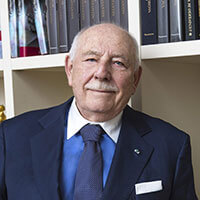This magnificent stone and the objects carved from it are at the heart of what is an evocative and unprecedented exhibition. Examples of intricate inlay and painted panels in lapis-lazuli leave us marvelling at the summits of beauty and craftsmanship attained over the course of centuries past.
This blue stone remains a vibrant source of inspiration, including for fine watchmakers. Some, such as Piaget, have frequently turned to lapis-lazuli for memorable dials. Both Cartier and Van Cleef & Arpels have created jewel-watches adorned with extraordinary and superbly sculpted specimens. Examples abound, not least among the treasures on show in Florence which, as well as a feast for the eyes, capture our imagination through history, geography and geology.
Like silk, lapis-lazuli reached the craftsman’s hands after a long voyage that was fraught with mystery and danger. The only known sources of quality lapis, whose veins suggest billowing seas or star-studded skies, were the mountains of Afghanistan, from where blocks were transported to Persia, then Egypt and finally Venice.
As we admire these splendours of the past, consider their origin and imagine how we might use them today, we would do well to remember that to have talent is not enough. Talent must be sought out, educated, seduced and preserved.
The Medici gave master craftsmen the chance to express themselves freely. We too should value and safeguard talent, rather than find ourselves surrounded by objects which, however beautiful, lack passion and soul. An unthinkable prospect for fine watchmaking, which conserves and transmits the very essence of time.












